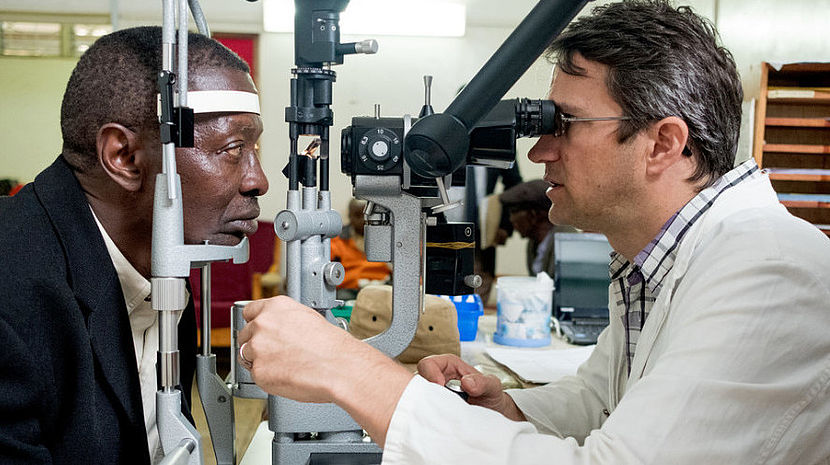Paving the Way for Better Treatment of Glaucoma in Sub-Saharan Africa

Mushi Ebenezer (left), a glaucoma patient, has a checkup with Dr. Heiko Philippin at KCMC in Moshi, Tanzania on June 8, 2018.
© CBM/Hayduk
Results of a trial published in Lancet Global Health this month could pave the way for significant improvements in treatment for glaucoma in Sub-Saharan Africa.
Dr Heiko Philippin, an ophthalmologist and CBM’s Global Advisor in Research and Training, has led a trial that shows that selective laser trabeculoplasty (SLT) could significantly improve treatment for glaucoma.
The eye condition glaucoma is the second leading cause of blindness in adults worldwide, with the highest prevalence in Africa. They are a group of diseases affecting the optic nerve that can lead to progressive and irreversible loss of vision.
The study was a collaboration through a research partnership between CBM partner Kilimanjaro Christian Medical Centre (KCMC) in Moshi, Tanzania and the International Centre for Eye Health (ICEH), funded by CBM and Seeing is Believing (a collaboration between Standard Chartered Bank and International Agency for the Prevention of Blindness). The study proves that for managing glaucoma in low-income settings, laser treatment is a significantly more effective and affordable option than eye drops.
Dr Heiko Philippin explains
“Glaucoma requires life-long treatment and follow up to save a patient’s sight, but this is hugely challenging in countries like Tanzania. At the moment, most people are treated with eye drops but many struggle with the cost and getting hold of these. So, they stop using them and ultimately become blind. These study results are exciting because they show we can treat glaucoma with a one-off or occasionally repeated outpatient treatment. My hope for the future is that there will be stronger referral networks for all in need so that we will be able to identify and treat people with glaucoma more quickly and prevent their eyesight deteriorating. In the next two decades, the number of people with glaucoma is expected to nearly double in Sub-Saharan Africa, from 10 to 19 million, so it’s more vital than ever that we find affordable, effective treatment options that also work in this part of the world.”